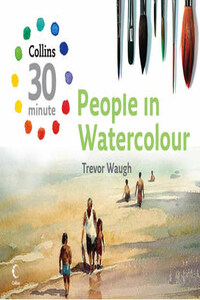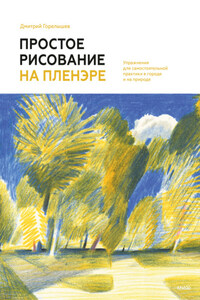Acknowledgements
My thanks go to Cathy Gosling, Kathryn Gammon and all the team at HarperCollins for their support and encouragement with this project. To Diana Vowles, for her superb editing skills as always. Thanks also to Steve and Laki Boyer for Beach Tango and Helen for Snow at Crickley Hill. Thanks to Tim Stubbs for the photograph. Lastly to Darlas for being there, you are truly special.
INTRODUCTION
For me, watercolour is the most spontaneous and suggestive medium, and I find the whole process of painting with it an exciting journey of discovery about both the subject and myself.
Unfortunately, there are many disheartening myths about watercolour â for example, that you have to get it ârightâ first time because you canât make corrections, and that painting people in this medium is harder to do than any other subject. I hope I can dispel some of these misconceptions in this book and encourage you to have a go at painting people with pleasure and fluency, enjoying the freedom and excitement that watercolour offers.
People in watercolour
It is true to say that if you canât draw it you canât paint it, so attention to your drawing skills is essential and the key to finding out how to describe people in paint. A short time spent doing some simple line drawing will help you to get your eye in before you pick up your brush. Quick sketches, taking only five or ten minutes, can also help to loosen you up and take away any anxiety about making the first marks on paper.
Look for the basic shapes of the human form and their relative sizes to one another rather than details. When you start to paint, let the colours flow naturally together and donât try to force them; corrections can take place later on. Remember that watercolour is an accidental medium, so you need to respond to the way that the colours behave on the paper.
The Archway I painted the arch and street scene first, limiting my colours to just three â Raw Sienna, Cobalt Blue and Lamp Black. Finally I put in my people as silhouettes, using Lamp Black.
The aim of this book
Many artists find the human figure the most challenging subject to paint and watercolour the most daunting medium. However, my belief is that a simple approach and a step-by-step procedure will bring you rewarding results in a short space of time. Knowing what to look for in your subject and how to capture it is half the battle. If you can achieve success with simple things, this will give you the confidence to be more adventurous and stretch yourself further.
In this book you will find new ways of looking at this supposedly difficult subject, along with quick exercises and straightforward information to help you paint people successfully. You will be surprised at how much you can achieve in a 30-minute painting and the joy it brings.
Umbrella People Using only Burnt Umber, I reduced my composition to just three tones. The white of the paper has been employed to do a lot of the work here.
Lady in Pink 14 à 18cm (5¾ à 7in) The emphasis here is on the pink dress; even though the figures in the foreground are larger they still support the figure in pink as a focal point.
ESSENTIAL EQUIPMENT
Even for beginners in watercolour, good-quality artistâs materials are imperative. They are more expensive but you will find that a little goes a long way, and the better results you will get compared to those from cheap materials will encourage you to keep on developing your skills.
There is a huge range of products to be found in the shops and mail order catalogues, and this can be bewildering, especially for novices. If your budget is limited, my advice is to purchase only top-quality paper, brushes and pigments, and leave items such as bags, pots, portfolios and brush-holders for another day.
Paints
Watercolour paints come in a variety of ranges and brands. All watercolours should be compatible no matter what the manufacturerâs name, so you can pick and choose whichever colours suit you. Artistâs quality paints have the greatest pigment content and luminosity â the cheaper equivalents in student ranges contain extenders and bulking agents which can create problems, so on the whole you get what you pay for.
Watercolours are sold either in pans or tubes. You can buy the former separately or in boxed sets in various ranges. I have used tube colours for all of the paintings in this book as I find they give me access to larger flowing washes instantly. They are ideal for studio use, but if you wish to take minimal equipment on location a neat little paintbox with pan colours and a palette in the lid is undeniably handy.








